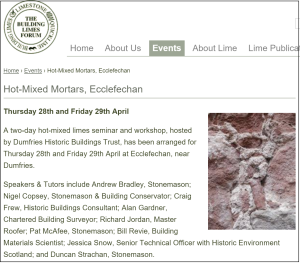The Diocese of London is encouraging churches to apply for the new England and Wales based eco church programme, which includes a gold, silver or bronze award status for eco-initiatives within a congregation (including building and energy related issues).
The Diocese of London writes:
The new Eco Church programme was launched in St Paul’s Cathedral on 26 January.
Eco Church is a new environmental award scheme, designed and hosted by the Christian Environmental charity A Rocha UK. It is also supported by the Church of England, the Methodist Church, Christian Aid and Tearfund.
Bronze, silver and gold awards are given to churches for environmental attainment across a wide range of areas, including care of buildings and churchyards, energy-saving, recycling, food and lifestyle, worship, preaching and teaching, engagement in communities and the wider world.
In a time of unprecedented environmental stresses, Eco Church enables churches to respond to God’s mandate to human beings to care for His creation, by integrating environmental care throughout their church’s life and mission.
The Diocese of London warmly supports Eco Church. This complements and reinforces the Diocese’s environmental programmes for churches.
Eco Church awards are gained by completing an online questionnaire. Any church can complete the questionnaire and print it out, without commitment or on a trial basis.
To enter any church for an award, it is necessary to register and save the questionnaire answers. This registration and application are free.
The first Eco Church award, at Bronze level, was presented to St Paul’s Cathedral itself, by Archbishop Rowan Williams, after he addressed those present at the launch event.
Eco Church is supported by a comprehensive range of resources, including online links. These resources can be accessed via the same questionnaire page.
As churches in the Diocese begin to register for Eco Church, the Diocese is seeking its ‘First Eleven’ Eco Churches. Each of these First Eleven is encouraged to recruit eleven more churches to Eco Church. Just eleven churches recruiting eleven more each, will have the potential to gather up to 132 Eco Churches in total.
How fast can we do this? What are we waiting for? Let’s sign up to Eco Church today!
And please let the Diocese’s Head of Environment and Sustainability know after signing up for Eco Church.
View the Diocese of London environmental initiatives
View the news release
Apply for an eco-award

 The IHBC is supporting the two-day workshop, ‘Hot Lime’ being organised by the Building Limes Forum (BLF), hosted by the Dumfries Historic Buildings Trust on 28-9 April on Ecclefechan, near Dumfries, with limited bursaries also available and BLF member rates also being made available to IHBC members courtesy of the BLF.
The IHBC is supporting the two-day workshop, ‘Hot Lime’ being organised by the Building Limes Forum (BLF), hosted by the Dumfries Historic Buildings Trust on 28-9 April on Ecclefechan, near Dumfries, with limited bursaries also available and BLF member rates also being made available to IHBC members courtesy of the BLF. 